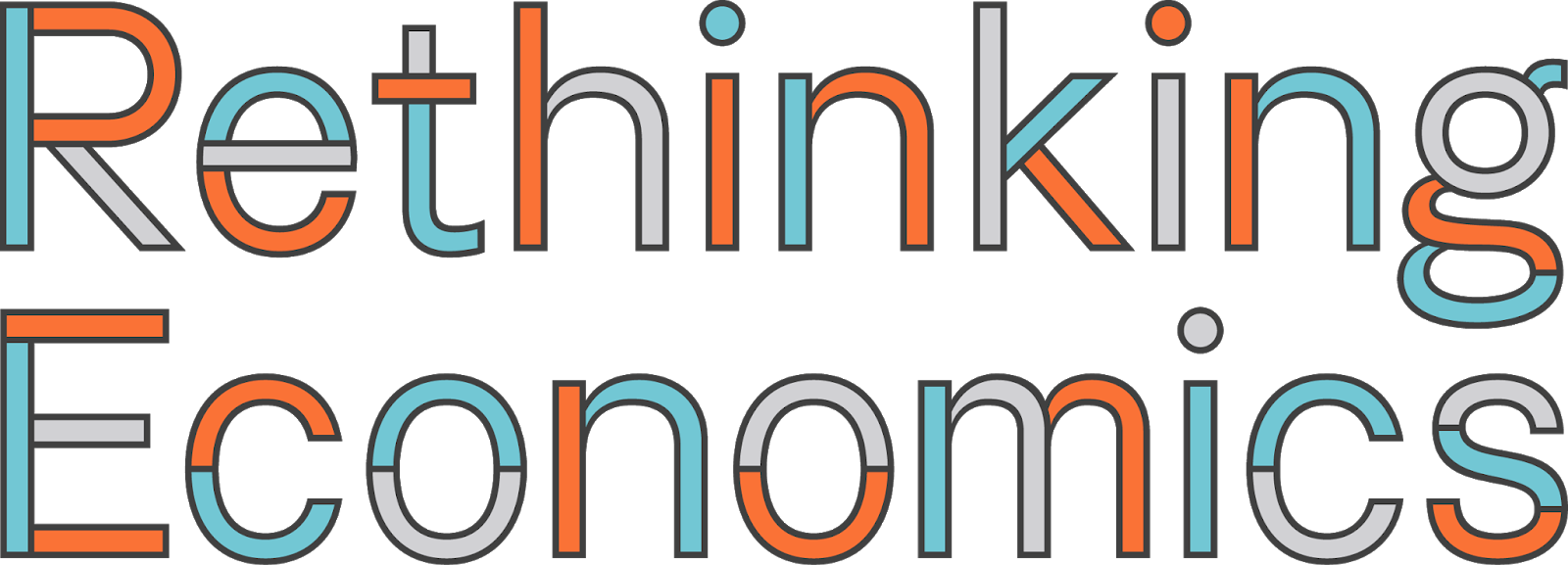It’s Demand All the Way Down
Rethinking Economics, 2020
Pluralist Showcase
In the pluralist showcase series by Rethinking Economics, Cahal Moran explores non-mainstream ideas in economics and how they are useful for explaining, understanding and predicting things in economics.


It’s Demand All the Way Down
By Cahal Moran
The notion that the demand and supply side are independent is a key feature of textbook undergraduate economics and of modern macroeconomic models. Economic output is thought to be constrained by the productive capabilities of the economy - the ‘supply-side' - through technology, demographics and capital investment. In the short run a boost in demand may increase GDP and employment due to frictions such as sticky wages, but over the long-term successive rises in demand without corresponding improvements on the supply side can only create inflation as the economy reaches capacity. In this post I will explore the alternative idea of demand-led growth, where an increase in demand can translate into long-run supply side gains. This theory is most commonly associated with post-Keynesian economics, though it has been increasingly recognised in the mainstream literature.
The nub of this idea is simple: just as supply can constrain growth, so too can demand. In secondary school biology we learned that the growth of an organism can be constrained by any number of things – air, water, nutrition, sunlight – and it will not grow at the maximum possible rate unless all of these are abundant. To post-Keynesians, assuming only supply-side growth is possible in an economy is like assuming only air and water matter for the grow of plants. As early as 1957, Nicholas Kaldor had developed a dynamic 3-equation model where capital investment responded to short-term boosts to demand, affecting productive capacity across the whole economy. Joan Robinson made similar motions in The Accumulation of Capital, as did Michael Kalecki, and these ideas are summarised comprehensively in Post-Keynesian Economics: New Foundations by Marc Lavoie.
Hysteresis: the Evidence
Though this approach fell out of fashion, over the past few decades there has been a sustained trickle of interest in ‘hysteresis', the related idea that recessions do not only affect GDP in the short-term but also have long-term consequences for the economy. The 2008 financial crisis and subsequent slow recoveries in the USA and Europe have triggered new research in this area among both mainstream and heterodox economists, as well as in policy institutions such as the IMF and central banks. Several key mechanisms for hysteresis have been proposed by researchers:
- Skill attrition of the labour force. The longer workers remain unemployed, the more likely it is that they will forget their skills, or become out of touch with the latest technologies used in their industry. Discouraged workers may also drop out of the labour force entirely.
- Investment in technology. New business formation declines in recessions, and new businesses are more likely to utilise the latest technology. Similarly, corporate Research & Development (R & D) goes down in recessions.
- Decreased turnover. As new business formation and job creation declines in recessions, workers/firms are less likely to get the jobs/employees that suit them best.
- Demand-induced capital investment. Businesses reduce capital investment in response to lower aggregate demand (see Kaldor’s above paper).
An eyeball test of whether severe recessions have persistent effects on output is to compare pre- and post-recession output levels for major crises. Reinhart and Rogoff report data (hopefully not using Excel) for 100 banking crises over the past two centuries and find the average time taken to recover to pre-recession GDP levels is 8 years. Cerra and Saxena look at both financial and political crises, finding that both types of crisis confound expectations yet have persistent effects on output - though financial crises are worse. Both papers support the idea that the decline in GDP from banking crises is not easily reversed.
There are more rigorous methods for testing hysteresis. Modern macroeconomics relies on a central concept known as the NAIRU, or Non-Accelerating Inflation Rate of Unemployment. This is the lowest rate of unemployment possible before workers’ wage demands become too high, triggering a wage-price spiral and runaway inflation. But whether the NAIRU exists and is stable determines whether it’s a useful guide to policy, and one way to investigate this is to see if estimates of the NAIRU change with economic conditions (which they shouldn’t). Laurence Ball uses data from 17 OECD countries to show that both monetary policy (a proxy for demand) and unemployment insurance (a proxy for supply) affect the NAIRU. Stockhammer and Sturn extend this to 40 recessions in 19 OECD countries from 1980 to 2017, confirming that monetary policy can have long term effects on the NAIRU. Ledesma and Thirlwall use data from 15 OECD countries over 1961 to 1995 to study a related concept, the natural rate of growth. This is the rate of growth at full employment, a kind of ceiling on the growth rate. As with the NAIRU, the authors find that the actual rate of growth seems to have an effect on the natural rate of growth, suggesting that this ‘natural’ rate is changeable rather than fixed and can be positively affected by demand.
Another technique is to estimate the effect of recessions on estimates of potential output prior to the recession taking place. If there was a lot of room for growth in the economy before the recession but now there isn’t, that suggests the recession had a permanent, irrevocable effect on output. This is the approach taken by Ball in a later paper, which looked at 23 OECD countries over the Great Recession and found an average reduction in potential output of roughly 8%. There is also a lot of variation, with the effect in Greece upwards of 30% but virtually no impact in Switzerland and Austria. Blanchard et al extend Ball's analysis to over 120 recessions in OECD countries. They find evidence for both hysteresis and `super-hysteresis' - the impact of recessions on the permanent growth rate as well as the level. These results hold even when omitting recessions which are more likely to be caused on the supply side, such as oil shocks, and even when restricting to recessions which are more likely to be caused on the demand side, such as deliberately induced monetary policy recessions. This bolsters the case for long-run effects of demand on growth.
A final method is to decompose output into its cyclical and trend components. Abiad et al use this method to study banking crises across developed and developing countries over the past 40 years. They find that output tends to fall below the pre-crisis trend and that short-term severity of crises is a strong predictor of this long-term impact, supporting the notion of hysteresis. Reifschneider et al focus on the recent crisis in the US, using a model to separate the growth of the economy into its cyclical and trend components on US data. They find that the financial crisis had an effect on both the level of potential GDP and its rate of growth – both hysteresis and super hysteresis.
Contrasting the Two Approaches
It is easy to over-egg the difference between the neoclassical and post-Keynesian literatures. Models of endogenous technological investment have been explored extensively by neoclassical authors, beginning with the seminal paper by Paul Romer. Both the neoclassical and alternative strands of literature were surveyed recently by Tavani and Zamparelli, who argue that there is a large degree of crossover between the two sets of theories, with both emphasising the response of long-run growth to investment and the knock on effects progress in one area of the economy – like R & D, or education – can have on the rest of the economy. Despite this, the theories tend to utilise different mechanisms: in the case of neoclassical models it is the rate of savings and market structure; whereas in alternative models it is the level of demand, income distribution and investors' behaviour.
Furthermore, though the mainstream literature has warmed to the possibility of hysteresis caused by downturns it has not yet warmed to the idea that potential output may depend on demand at all points in the business cycle. Researchers such as Kaldor, Robinson and Kalecki did not necessarily isolate the effect of declines in realised output on potential output, instead focusing on the effect of realised output on potential output in general. Just as capital investment may decline in response to a lull in demand, it may increase in response to a boom as firms and entrepreneurs are spurred to innovation. The policy implication of this is that aggregate demand may need to be boosted even outside of recessions in order to achieve the optimal level of long-run output.
In fact, the post-Keynesian framework strongly suggests a unified explanation for demand-side effects in both booms and busts, as well as being consistent between micro and macro-theories. As I discussed in a previous blog, the post-Keynesian theory of the firm assumes that, in order to deal with uncertainty about the level of expected demand for their products, firms tend to hold spare capacity so they can adjust production to realised demand. Thus, contrary to the standard neoclassical model, quantity will usually adjust to increases in demand rather than price, and both output and employment will increase in the face of rising demand. Of course, this only holds true until supply side limits are reached, whether in the form of capacity constraints on equipment or employment constraints in the labour market.
For a long time, post-Keynesians could fairly be accused of being vague about this supply-side constraint, only emphasising that it definitely isn’t the neoclassical notion of NAIRUs or a natural rate of growth – and that we are currently well below it. However, Servaas Storm has done a good job of filling this gap from a contemporary empirical perspective. Using US data he calculates – based on capacity utilisation, broad measures of unemployment, and profits - that the US “has been operating a couple of percentage points below ‘full employment’ ever since the end of the 1990s”, which “rose to more than 10% in the aftermath of the financial crisis”. Thus, the independence of supply and demand and the possibility of demand-led growth, though it can seem like an academic nicety, has direct relevance for the level of employment and output that is pursued by policymakers.
There is still so much to discover!
In the Discover section we have collected hundreds of videos, texts and podcasts on economic topics. You can also suggest material yourself!
Discover material Suggest material

